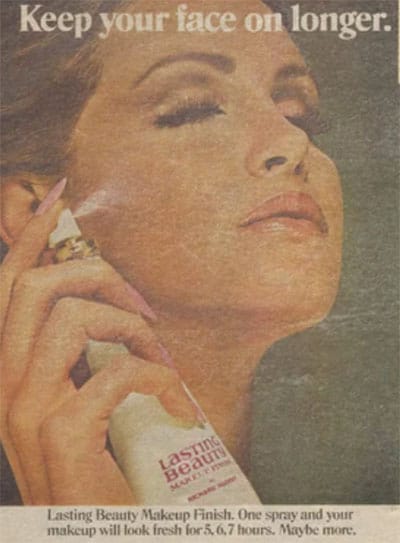New York Center for Facial Plastic Surgery
Schedule a consultation
Schedule today

Dr. Andrew Jacono discusses the Instagram Face with Paper Magazine.
In today’s social media-dominated age, the face has taken on a new importance. We are constantly bombarded with beautiful, symmetrical appearances and compare ourselves. For better or worse, this has led to a spike in the demand for cosmetic procedures. Both surgical and non-invasive treatments have given the modern face an undeniably uniform character.

“Beauty is all about symmetry,” says Dr. Jacono. “Highly sculpted, geometrically ‘perfect’ faces are the most desirable. This is due to biology, of course, though today, icons like the Kardashian-Jenners have made symmetry even more desirable. The problem is that natural symmetry is very uncommon, which is why people turn to aesthetic treatments for outside help. We’re no longer living in a time when plastic surgery is taboo.”
With this emphasis on symmetrical, similar-looking appearances comes the rise of the “Instagram Face.” People are more likely to associate modern beauty with that found on social media. Thicker lips, higher cheekbones, tighter skin, and almond-shaped eyes are in vogue.
“All of this said, there’s more room for experimentation and customization today than ever before,” says Dr. Jacono. “There’s a new fascination with rarity than there might have been ten or twenty years ago. Influencers with different body types help people embrace uniformity while also supporting individuality.”
Recent advancements in medical technology have made it possible for people to look symmetrical while also maintaining individual beauty. The best doctors can tailor their techniques to patients’ requests.
“As important as it is to be a great technician, it’s just as important to have an artist’s eye,” says Dr. Jacono. “I look at everything holistically and balance a client’s face in a way that makes sense. This means ensuring that the face’s proportions are in mathematical and visual agreement. If I made everyone look the same, though, there would be no point. Working on the face is a lot like working on a sculpture. It requires precision and artistry.”
Some of the most popular surgical procedures include the facelift, the neck lift, and the rhinoplasty. The facelift and neck lift remove wrinkles, eliminate banding, and smooth skin and muscle. The rhinoplasty, or nose job, changes the shape and profile of the nose. Doctors can shave down nasal bridges, make nostrils smaller, and even shorten the length of the nose.
The biggest benefit of surgery is that it provides dramatic results. Results either last for many years or are permanent.
The drawbacks of surgery include that it can be expensive. Recovery time can also extend for a period of a few weeks. It may take a few months for results to be fully visible, which can frustrate some clients.
On the non-invasive side, injectables are particularly popular. These include Botox, Restylane, Juvéderm, and Kybella.
Botox is made from a bacterium that, in small doses, is safe for aesthetic treatment. It blocks nerve impulses to certain muscles, relaxing them. After treatment, the skin smooths.
Restylane and Juvéderm are made from hyaluronic acid, a compound that is naturally found in the body. When isolated and reinjected, hyaluronic acid adds volume, eliminates wrinkles, and tightens skin. Hyaluronic acid injectables are known as facial fillers, as they quite literally fill in areas without volume.
Kybella is a new, innovative injectable that eliminates chin and neck fat. Unlike other injectables, Kybella is permanent, forcing the body to reabsorb fat cells. After a series of sessions, Kybella restores a sculpted chin area.
The biggest benefit of non-invasive treatments is that they are quick and relatively painless. A single session typically lasts between 30 minutes and 1 hour.
As great as non-invasive treatments are, however, their results are not as dramatic as those of surgery. They are also generally not permanent, only lasting up to 3 months for Botox and between 9 and 12 months for fillers.
“In my opinion, surgery is a more effective option than injectables,” says Dr. Jacono. “It lasts longer, offers better results, and in the long run, it’s less expensive. Injectables require repeat treatments over the course of years, and at some point, they have diminishing returns.”
Dr. Andrew Jacono, M.D., FACS, specializes in facial rejuvenation. He is an assistant clinical professor at the New York Eye and Ear Infirmary and at the Albert Einstein College of Medicine. The head of facial plastic surgery at North Shore University Hospital, he is also a fellowship director for the American Academy of Facial Plastic and Reconstructive Surgery.
Dr. Jacono has been published in several major medical venues, including the Aesthetic Surgery Journal and the Archives of Facial Plastic Surgery. He has been featured on several news outlets, including Good Morning America, Anderson, and CNN, as well as in USA Today, Parade, and Newsweek. His television series, Facing Trauma, appeared on the Oprah Winfrey Network. Jacono is a senior advisor to FACE TO FACE, a nonprofit organization that offers pro bono surgery to domestic violence victims. He is also an avid volunteer surgeon for Healing the Children.

Accessibility: If you are vision-impaired or have some other impairment covered by the Americans with Disabilities Act or a similar law, and you wish to discuss potential accommodations related to using this website, please contact our Accessibility Manager at (212) 570-2500 .